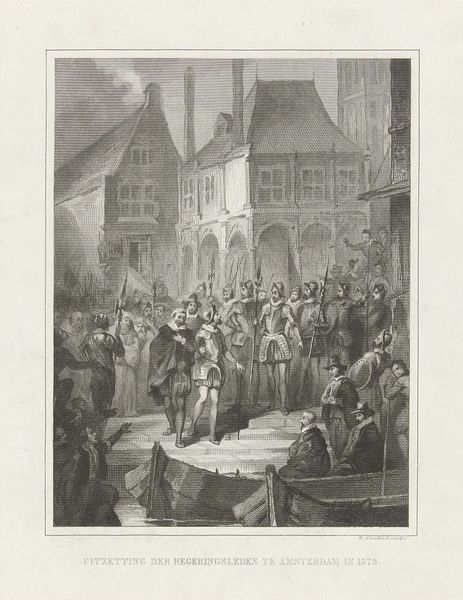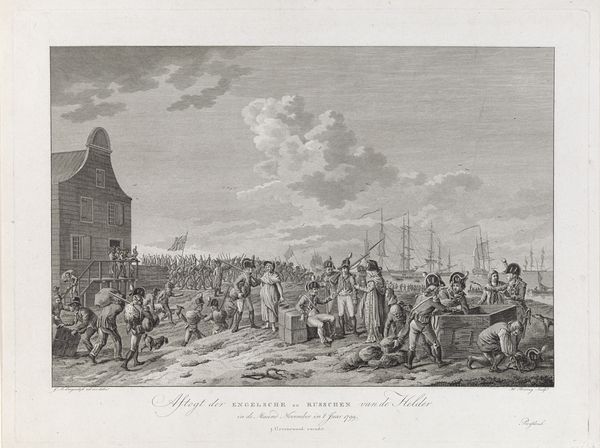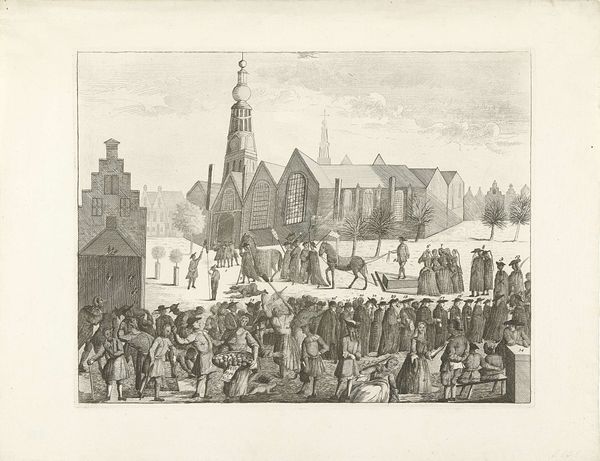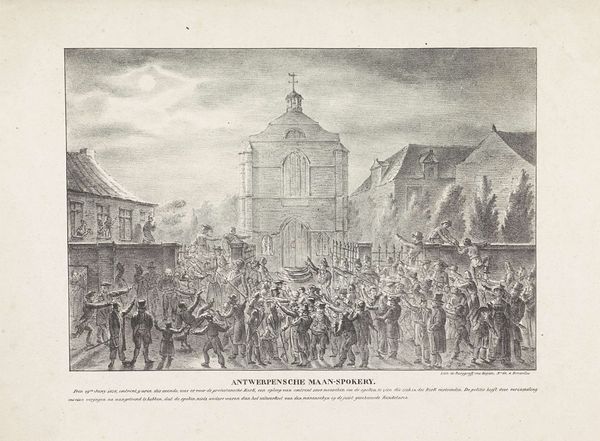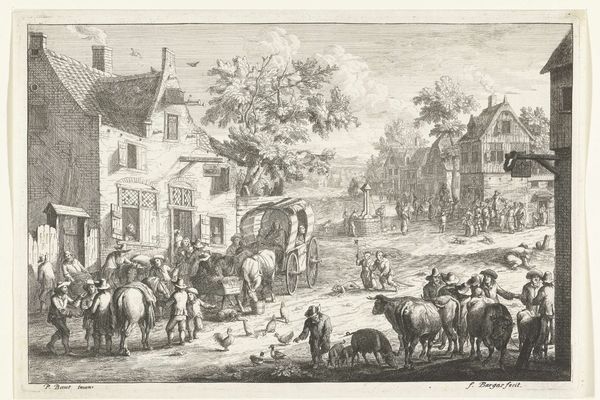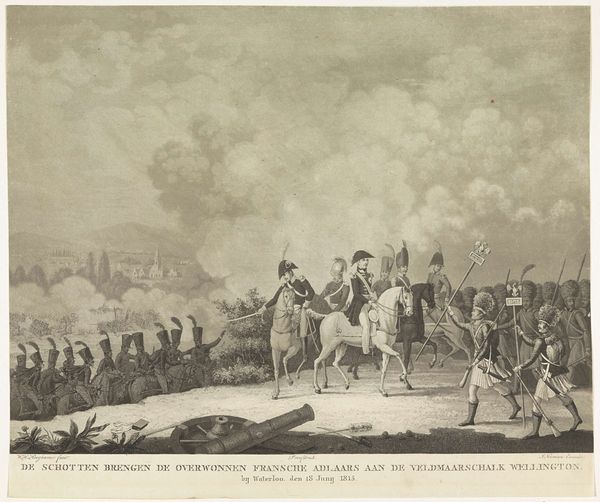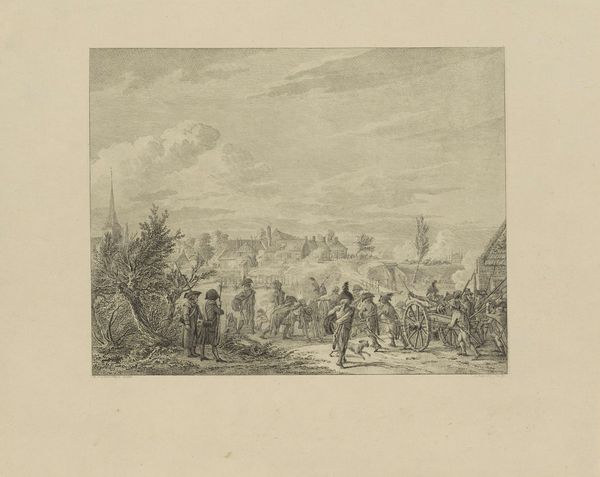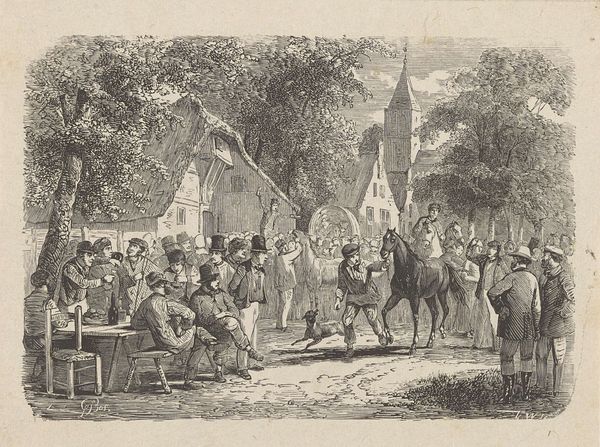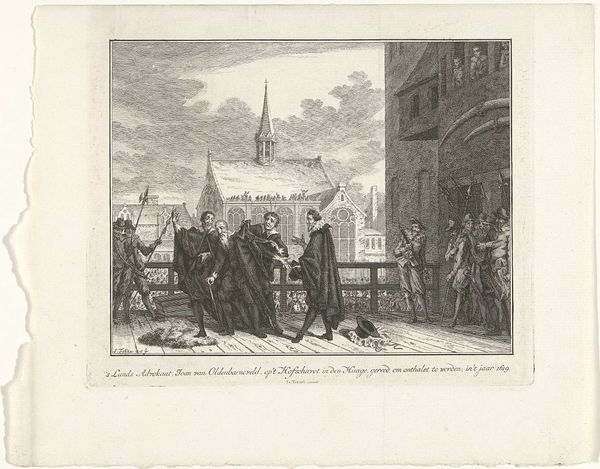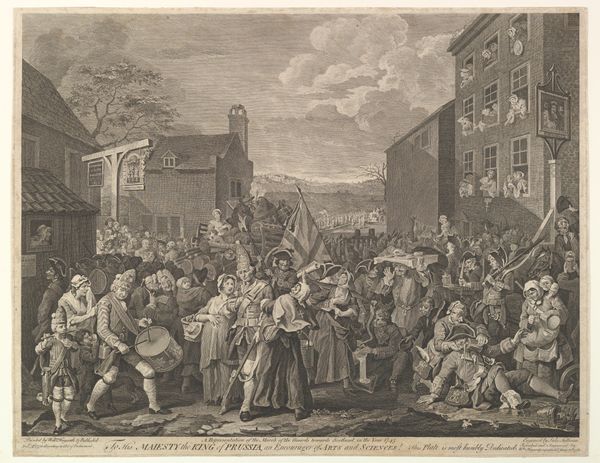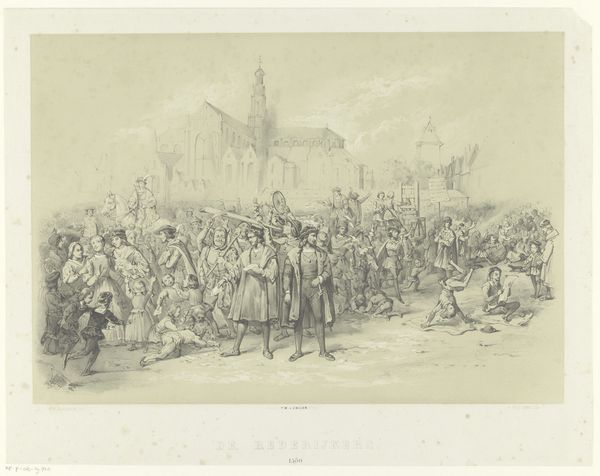
Dimensions: height 217 mm, width 311 mm
Copyright: Rijks Museum: Open Domain
Editor: Here we have "Alva verlaat Amsterdam, 1573," an engraving from somewhere between 1883 and 1885, attributed to Emil Ost. It's quite detailed. All those tiny lines make the whole scene look so…heavy, you know? With such density of linework. What strikes you most about it? Curator: Well, knowing the title, I immediately consider the context of the Duke of Alva's departure and what it signifies for the history of Amsterdam. This image, created over 300 years later, speaks to how historical narratives are shaped and remembered – or perhaps even reshaped – through art. What message is the artist trying to convey? Is it a celebration, a somber reflection, or something else entirely? Editor: That's interesting, how the date it was made could change the reading of an artwork like this. It does read as pretty celebratory, almost romantic, in a way, what with all those Dutch buildings and people cheering Alva’s departure on the right. I just see regular folk and horse riders, like a charming old cityscape. Curator: Exactly, the Romanticism tag emphasizes a nostalgic interpretation of history, framing it as a picturesque event rather than a moment of political upheaval. Consider who this engraving was intended for. Was it aimed at a broad public audience? And how did the artist employ familiar visual tropes of historical painting to create this imagery? Editor: It almost feels propagandistic… It’s like myth-making through visual media, I guess. Now I wonder how "accurate" the representation of this historical scene is and why the artist made certain representational choices! Curator: Precisely. Recognizing the political undertones, you begin to see how art can reinforce particular historical perspectives. It forces us to be critical viewers, questioning the intentions behind these representations and their potential influence on shaping collective memory. Editor: I definitely look at it differently now. What I saw as just a romantic snapshot feels a lot more loaded. Curator: And that's the power of historical context; it invites us to look beyond the surface. I also learned a little bit seeing through your fresh perspective.
Comments
No comments
Be the first to comment and join the conversation on the ultimate creative platform.

